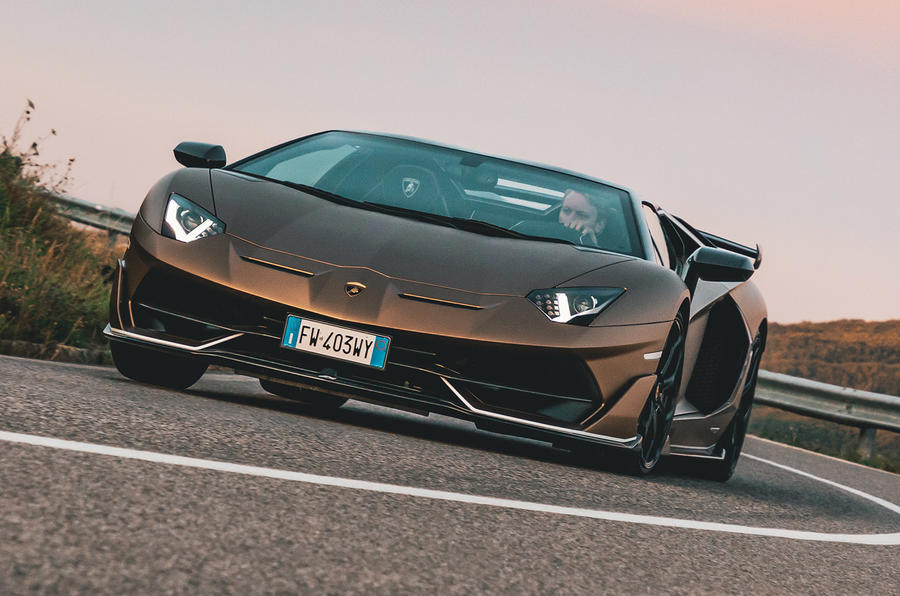What is it?
Jota. At Lamborghini, the name carries a level of expectation. The SVJ Roadster – that's Super Veloce Jota – is therefore the ultimate expression of what an Lamborghini Aventador can be, not only from a coldly technical perspective but also from a place of flamboyance, high emotion and matt-bronze paint.
This makes for a strange, 217mph conflict of interests – one that also costs more than £400,000 after you’ve ticked the boxes for contrast stitching and some carbonfibre trim on the rocker cover and door mirrors. If you’ve not already suspended reality, do so now.
As a technical exercise, the Roadster presents as a Can-Am sportscar-esque road-racer whose aerodynamic sophistication extends to electronic actuators in the front splitter that channel air through vortex generators on the underbody. There is the same network of flaps found on the coupe; they can vector downforce to either side of the huge carbonfibre rear wing or stall it completely to counteract body roll or maximise straight-line speed respectively. You'd need a racetrack to prove it all works, so that's what Lambo did, setting a new Nürburgring lap record with the coupe. Prego.
The Roadster weighs only 50kg more than coupe, sacrifices just a tenth during the sub-3.0sec dash to 62mph and is largely identical in mechanical terms. The car’s pushrod dampers – stiffer than those of Lamborghini the SV Roadster – are situated in-board and control double-wishbone suspension that, via aluminium subframes, are mounted to a carbonfibre monocoque tub. At each corner there are then carbon-ceramic brake discs larger in diameter than the steering wheel (adorned with rally-style centre-marker) and the rear wheels swivel to help pivot the car or stabilise it, depending on cornering speed.
In terms of engineering, it means the SVJ is both old-world pure and cutting-edge complex, if you’re prepared to gloss over the thumping brutality of the single-clutch, automated-manual gearbox (something that's far harder to do once you've driven an 812 Superfast, or even the Huracan Performante).
And yet the emotional side is arguably more important, because how many of the 800 SVJ Roadsters that Lamborghini intends to build will ever see a racetrack? Very few, I’d wager. And how many owners will at some point remove the roof? All of them.
It consists of two six-kilogram targa-style panels made of carbonfibre. They’re lifted out, though not always as easily as you might expect, using quick-release levers behind the headrest and can be clamped in place in the front storage compartment, where they take up almost all the available space. You can also wind down the screen above the firewall to let in valvetrain chatter.
































































Join the debate
Add your comment
Oh! I wish I could win the Euro Lottery
The Aventador is the best looking car of all and I would settle for a coupe ,standard model for under £300k. Must buy a ticket and dream.
The past is now
Lamborghini seems to have finally returned to its roots. I imagine many will disagree, but from recollection, Ferruccio approved the manufacture of the Muira to act as halo models to help with the sales of his other, front engined, products, namely the 400GT, Espada, Islero & Jarama. The Aventador, although in production for longer, now acts as a halo model for the Urus.
Lamborghini stands for....?
It stands out for outrageous design, a magnificent Engine, a V12 at that, nothing else with exception of a Gumpert comes close,it may not be the fastest, but on looks alone it’s a winner...!!